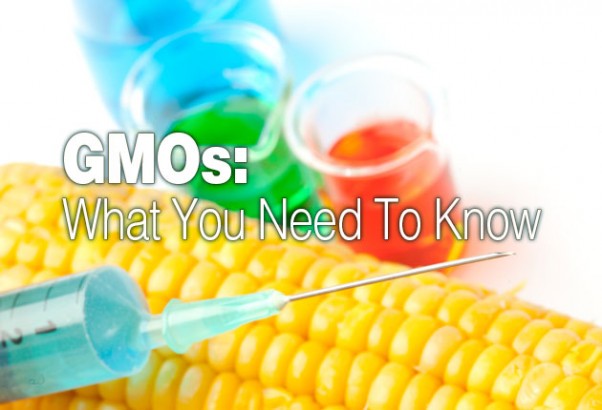If you know anything about The Hallelujah Diet, you know that food is very powerful. The right foods can give the body what it needs for optimal health, and the wrong foods can cause such deficiencies and toxicities that health and life itself can be threatened. For this reason, it is extremely important to know where your food comes from and how it is raised.
Food production is a system. If you feed the soil, the soil feeds the plant, and the plant feeds livestock and people. How you treat the soil matters. It isn’t just dirt under your feet. There is a whole ecosystem of bacteria and bugs that help break down nutrients for plants to utilize.
Unfortunately, for several generations, modern farming has relied on chemical application to kill weeds and pests, a short-term solution that seemed to get the job done. But, like antibiotics, resistance developed, and new chemistry is needed to address the resistance.
This creates a cycle in which things very quickly get out of balance and produce unintended consequences — take, for example, the near annihilation of the globe’s honey bee population, which pollinates our crops (but that is a story for another day).
The challenge of effective weed control spurred a “great” idea from the biotechnology industry: Make a plant that is resistant to Roundup brand herbicide. Scientists began work to discover the gene that made plants susceptible to Roundup, replacing the gene with an alternative, Roundup-resistant gene derived from a bacteria.
The result was a “Roundup Ready” plant, which could be sprayed repetitively with Roundup without killing it - the original genetically modified organism (GMO).
It was a seemingly helpful concept, but do we want to spray all of our crops with a weed killer? Already, far more chemicals are being used since GMO crops came onto the scene, about 500 million pounds more.
Ironically, Roundup — or glyphosate as the chemical is generically called — was not originally intended as a herbicide. Its original patent was as a chelator, a molecule that has “claws” that grab onto a positively charged mineral and don’t let go. Roundup works by chelating minerals both in the plant and in the soil near the root tips to destroy the plant. First it incapacitates the plant’s defense mechanisms, then it starves good bacteria in the soil so that soil pathogens take over and kill the plant.
Because Roundup chelates minerals (making them unusable by the plant), it makes the plants weaker, diminishing their nutrients. As a result, plants sprayed with Roundup are more susceptible to drought and disease, not more robust as they appear to be, standing alone in a weed-free field. They are, in fact, weak and sick, and the animals that eat them become weaker and sicker as well.It is also harmful to beneficial species of soil bacteria, like bifidobacterium, lactobacilli, enterococci, and bacilli, while potentially pathogenic bacteria like Clostridium perfringens, Clostridium botulinum, and a few Salmonella species were highly resistant to glyphosate. It’s a bit like an antibiotic for the soil. It kills the good bugs and lets the bad bugs proliferate unchecked, and then we wonder why there is rampant salmonella contamination in the egg supply, and chronic botulism in cattle! Have we not disrupted their natural microbial balance in part with these GMO crops? Not to mention, residual glyphosate in the plants will ravage the internal organs of anything that eats the crop — including you. Insect control has become another major stepping stone in genetic engineering. It focuses on bacteria, Bacillus thuringiensis (Bt), that produces a toxin that can be used for “natural” insect control. The toxin can be sprayed directly on the plant or it can be bioengineered right into the plant to produce the toxin continuously through all of the plant’s tissues. Then, when the insect takes a bite, the toxin is activated in its stomach, ruptures it, and the insect dies. In India, adoption of Bt cotton plants has led to disaster. After harvest, Indian farmers typically let their cattle graze on the cotton plants, which is not a problem with conventional cotton. What the Indian farmers didn’t know, however, is that one day of grazing on Bt cotton is enough to kill a water buffalo. Tens of thousands of cattle have died from this Bt toxin in India. Even just handling the plants is problematic; many Indian farm workers have filed complaints about skin reactions while handling Bt cotton.
Do we really want our plants to be living toxin factories? Is this the future of farming in North America? Are you Bt tolerant? What happens if the Bt toxin gene transfers to the bacteria inside of you? Could you become a Bt toxin factory?Indeed, there is evidence that a small amount of the Bt gene has been transferred to people. The result came from a test that checked people who had had ileostomies (a surgical operation in which a piece of the ileum is diverted to an artificial opening in the abdominal wall). What if the antibiotic resistant genes that are part of the genetic engineering process get transferred to you, too? A preliminary answer has come from Canada, where 30 pregnant women were screened for the presence of Bt toxin in their blood; 28 (93%) of the pregnant women and 24 (80%) of their unborn fetuses had detectable levels of Bt toxin in their blood.2 Either a lot of Bt toxin is getting through their GMO food, or they are producing it continuously in their own gut as a result of an initial exposure. No one knows for sure — yet.
Regardless of these unanswered questions, 88% of corn crops in the USA are GMO crops, as are 94% of soybean crops, 90% of cottonseed and cottonseed oil crops, 90% of canola crops, 95% of sugar beet crops, over 50% of Hawaiian papaya crops, and over 24,000 acres of zucchini and yellow crook neck squash.3 Regrettably, genetically engineered salmon now has FDA approval and cows can now eat GMO alfalfa, too.Reports from farmers have cited major infertility problems among their cattle or pigs. An international team of veterinarians has isolated a new entity that they have conclusively shown causes this massive crisis of infertility and miscarriages among livestock (and maybe among people as well). They don’t know exactly what it is. It isn’t a fungi, a bacteria, a virus, a bacteriophage, or anything else they have seen before. It is present in high concentrations in GMO crops — and the cure is to use non-GMO crops. Could this also be part of the rising epidemic of infertility and miscarriages seen among people? Click here to read about it in an article by Olin Idol, ND, CNC, Hallelujah Acres Vice-President of Health. It is important when looking at mice and rat experiments to note that studies can be done to find problems with GMO foods and studies can be done to not find problems with GMOs. When one research group looked at the authors’ conflicts of interest for GMO research, they noted that favorable outcomes were much more likely when the authors had an affiliation with a company with a vested interest, or funding came from industry, or when the funding source was undisclosed but authors had industry ties. In other words, “science” is being bought and made to look neutral when, in fact, the funding industry usually has the last say on whether results can be published or not, and what data get included in the reports. So, most published articles on the health effects of GMO crops have found no problems. Any aberrations in the data are ignored and called insignificant. Only a handful of studies have revealed health issues. Publishing contrary GMO results has ended more than a couple of research careers. What kinds of issues have been seen in animals? Infertility and miscarriages in mice eating GMO soy, smaller litters after consecutive breeding cycles in mice eating GMO corn (both with Bt toxin and Roundup resistant genes), rats with damage to their kidneys and livers from eating GMO corn, and increased rates and severity of cancer and liver and kidney damage in rats. Some of these results are preliminary and not all the studies are without design faults, which could be said of industry-funded studies as well. But very little, if any, follow-up is done on negative GMO results. There is interesting anecdotal evidence among people as well. GMO animals act a lot like kids who have inflamed guts, whose intestines are all out of disorder. Leaky gut syndrome could be partly attributed to GMOs. Certainly, the bacterial disrupting nature of Roundup and the stomach-splitting action of Bt toxin could play a role in intestinal health.
The research isn’t in; it isn’t being funded — because science is stuck in the middle of a big fight over who controls our food.Will the vision of our food include a bit of Bt toxin and a smidgeon of Roundup in every bite? We want organic, biodynamic production of food. We want sustainable farms, using technology that does no harm to the soil or to us. The main problem with GMO foods is that it is antithetical to anything natural. These foods have been altered so that they can absorb toxic chemicals without dying, then chemical remains in the plant at much higher concentrations than otherwise possible. Alternatively, we now make a plant into an insecticide factory, so that the whole plant is a poison — in every kernel, every seed. Is this our vision for growing food? This biochemical dream is not about producing more food, or about feeding the world. It is about “chemical companies selling more chemicals.”
Do we wait for science to prove or disprove the benefits of GMO crops and animals? No. There is already enough evidence to question motives. Fortunately, it is still relatively easy to avoid GMO foods.Avoiding processed foods is number one. Anything with sugar, soy, canola oil, cottonseed oil, or corn products is likely to have GMO ingredients in it. So, use only non-GMO sugar (from sugar cane, or honey) and non-GMO corn products. Also, organic food by definition is GMO-free, and you can look for the Non GMO Project label on products that have been certified by a third-party to ensure that they are GMO-free. Finally, vote with your dollars — ask for non-GMO versions of foods you like. Consumer pressure, not government regulations, will change what is sold in your local grocery store.






